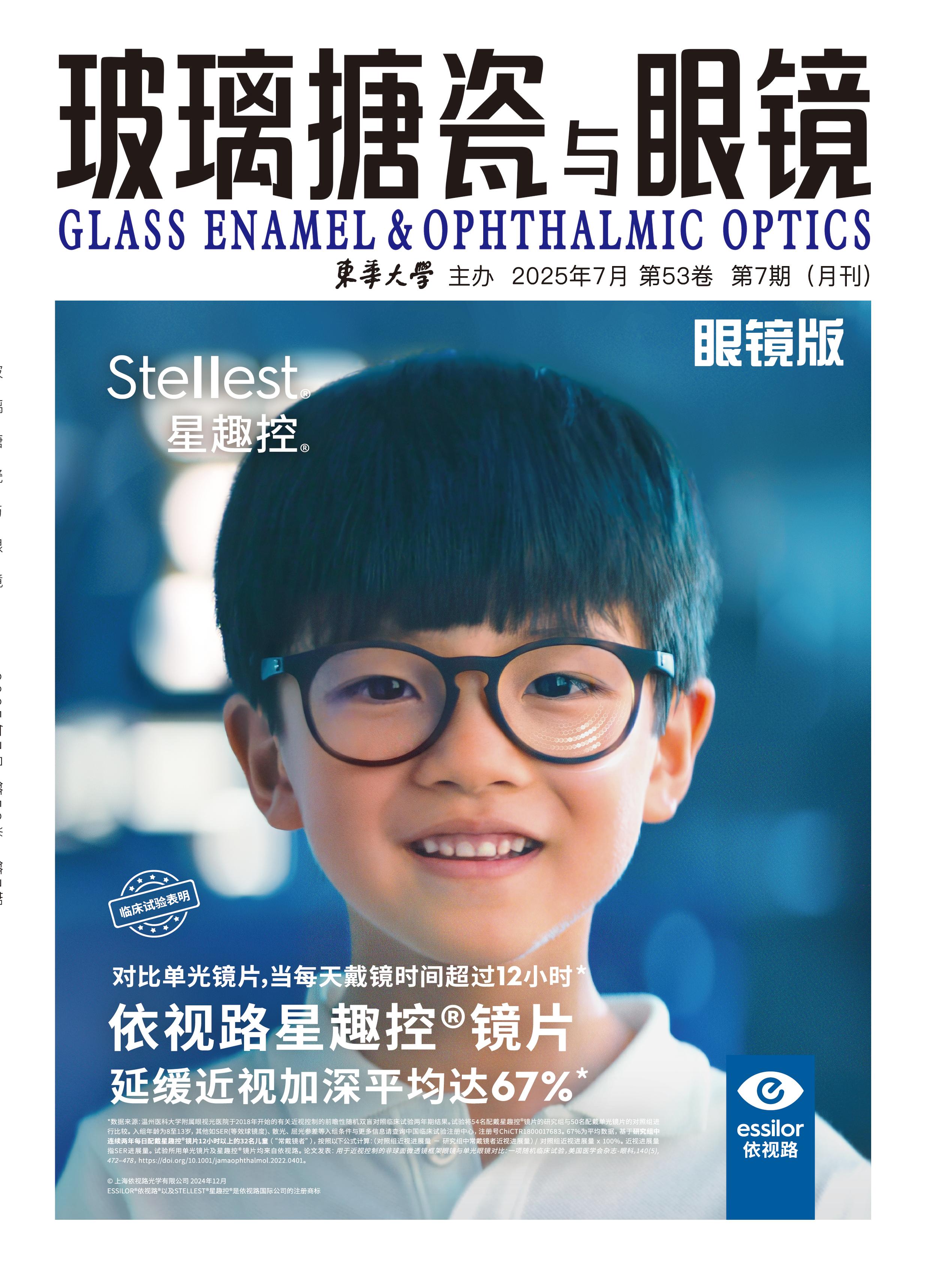
Glass bottle is a kind of green and environmental friendly food packaging container. During the production, maybe there are many microscopic defects on the glass bottle surface caused by glass chemical composition designing, melting, forming, annealing and using, which affect its performance. The microscopic morphology of the glass bottle surface was analyzed by scanning electron microscope. The glass surface spray enhancement was investigated which can effectively improve its performance. The cold and hot end spraying technology were formulated to improve the performance of glass bottle in the production process. Results show that the slide angle of the glass bottle prepared with the designed cold end spraying technology can be less than 10°.
The influences of refining agent Na2SO4+C and CeO2+NaNO3 on visible light transmittance of ultra-white flat glass are investigated. Results show that the visible light transmittance of glass enhanced from 91.30% to 91.87% with the increment of pyrolysis refining agent Na2SO4+C. But for the oxidoreduction refining agent CeO2+NaNO3, visible transmittance of glass remained unchanged when the mass fraction of CeO2 was less than 0.07% and increased obviously when the amount of CeO2 exceed 0.07%. Although the visible transmittance of ultra-white glass decreased due to the coloring ion Ce4+ and ultraviolet cut-off effect, no more than 0.07% is recommended. In face, the higher oxidizability of CeO2+NaNO3 rather than Na2SO4+C is helpful for reducing the value of Fe2+/FeTotal.
The proper parameters in melting process were determined according to actual production of a domestic float process line, so as to reduce bubble defect and improve the yield of solar photothermal glass products by optimizing parameters including air-fuel ratio, fuel portion, flue gas distribution, batch moisture and mixer speed. These parameters can provide directions for enterprises to product photothermal glass.
Aiming at the breaking and conveying process requirements of ITO glass deep processing production line, a new design of the specific structure was carried out to solve the on-site problems which different from ordinary glass deep processing production lines.Thus meet the process requirements of ITO thin glass production line.
By detecting the percentage of tin oxide content in glass, the advance amount of tin oxide plate electrode brick in OLED and LTPS plate display substrate glass kiln was determined. By comparing the percentage change of tin oxide content in glass before and after the advance of electrode brick, the advance time and advance amount were optimized to stabilize the process state of kiln and the liquid flow in the kiln.
A continuous vertical conveying system for plate glass is proposed. When the original production line and the deep processing production line are located in different floors, this device can realize the automatic connection between the original production line and the deep processing production line. Thus, the glass transported from the original piece can be conveyed to the deep processing production line continuously and vertically, realizing the automatic process of whole production line and cutting the cost effectively.
Taking the raw material workshop of glass factory as an example, the design of the dust removal system in the raw material workshop was introduced, and the problems and solutions in the system operation were analyzed under the energy saving and emission reduction development direction.We need to cooperate closely with other specialties to design a better dust removal scheme.
The function of existing transport and buffer devices of photoelectric display glass substrates is glass substrates can be transported or stored through the transport and buffer device roller, when workers move the glass substrates oblique on the devices. Recent devices are not enough to manual sampling, turning over, free lifting and multi-piece placing during the production process of photoelectric display glass substrates. In order to achieve multi-functional use, the new transport and buffer devices are devised to broaden the applications of transport and buffer devices.
The main components of phosphate glass are harmless to the environment and human body, and its basic structure determines that its chemical properties are unstable. So that the glass shows sustained-release characteristics which enables it to have great prospects in biomedicine, antibacterial, glass fertilizer and some other fields. The general situation of phosphate glass and its main application in the field of sustained-release were introduced. The sustained-release mechanism is described in detail. The research progress of phosphate glass in different fields such as biomedicine, glass fertilizer and antibacterial materials are systematically introduced, and the development prospects and directions are elaborated.










